Re-engaging society with itself
May 30, 2008

Article written by Martin Musiatowicz
During the 1960’s a number of revolutionary groups, among them Archizoom, Superstudio and the Situationist International, critical of changes in modern society, came about in an attempt to resist capitalism, resurrect the individual and redefine modern life.
The modern city which usurped community and the institution through the continued growth of consumerism has continued to disengage and hyper individualise society to this point. Commodification and consumption define life, space and the cities which we inhabit; the entire world or at least the developed world, it could be said, is governed by shopping. Today however, it is not just the production of real products which drives economic powers, but services, entertainment and information. Much like the young revolutionaries of fifty years earlier, contemporary practitioners are faced with a rapidly changing world –a world which often changes before actions are realized. Ideas of re-engaging society with real experiences and direct relationships are an equally relevant concern today as they were then, however, while the alternative visions proposed by those groups were utopian and revolutionary, today’s practice, having realised the now hybrid condition of culture and commerce and the total fusing together of virtual and real, tends towards subtlety and subversion –on one hand serving functional needs and commercial necessity, but at the same time finding strategies to maximise potentials for unplanned interaction, encounter and real experience.
The practice of architecture and especially that associated with public space and civic institutions, has ridden –or perhaps more appropriately fumbled over– each wave of change, searching for ways of making fixed realities in a rapid and turbulent environment. The spectacle for architecture is the incessant desire for icons and monuments, in large part driven by competition for tourism. There are very few briefs for architectural competitions which do not call for the creation of an iconic structure or space. Helping this often problematic concern along are the new abilities to represent and sculpt anything we can imagine with the aid of software –often in a void. In thinking about civic or public space, it is necessary to survey further the sorts of places where people encounter real differences, exchange concepts of value and generally form their notions of what it is to be one person among many, and to be in one place as distinct to any other. Contemporary practitioners search for ingenuity in how to tackle the many spaces that make up a city and shape them not only to serve, but also to enhance, the life outside our everyday living and working environments. Purpose-built, deliberately shaped public spaces remain essential elements of an urban infrastructure, central to the construction of a city’s identity. Yet the qualities of the full fabric of spaces that are built within and around both public and private institutions structure the underlying discourse of a city. Streets, alleys, lobbies, informal spaces, and even carparks and lifts figure more regularly in the peoples’ lives and form the nature of their exchanges. Such ‘loose spaces’1, as they could be called, have provided a ground for many architects to create an un-programmed space for encounter. Program, once simply a tool for assigning an objective function to a space has been critiqued and manipulated to allow for new synthetic opportunities and greater openness for the unplanned event.2 By utilising the interstitial, other less defined meetings and activities can exist alongside those more discreet and defined.
The changing nature of civic institutions in response to the shifting climate has allowed other opportunities to re-define and juxtapose traditionally discreet programs. Up until only a few decades ago, civic institutions represented a uniquely commerce free zone, today they are an amalgamation of commercial and civic space. Traditional typologies reflected the aura of cultural institution as a ‘temple storehouse for quiet contemplation’, in opposition to the growing notion of a ‘container as a hub for exchange’3. These developments have been driven partly out of diminishing funding that these institutions gain directly from the state, which has required them to search for new ways of generating revenue through retail and leasing. In order to remain relevant and encourage engagement, civic institutions have had to provide a service, not simply scholarly elitism, and begin to treat the public more like clients in the information and entertainment business4. The classical perception that institutions can exist purely for what they hold, say the collection of a museum, is no longer viable as the cultural institution is positioned to compete against other activities in entertainment and leisure markets. Added to this, culture now exists everywhere with the ubiquity of the internet. There is a great deal of competition and diversity surrounding ‘cultural attractions’, with catch words such as entertainment and choice resonating key demands –the result being greater emphasis on experience as well as education, and a trend towards cultural containers bringing multiple institutions and functions together and becoming destinations in their own right5. For an architectural response to this, the Pompidou Centre defined a new typology, which can be seen in not only other museums but also libraries, schools and town halls. Such pressure cookers of society allow opportunity to create a sense of density of people and activity and to enable overlap and blurring –they become magnets for the community, locally and globally.
In their time the Situationist International, aware that function was inevitable, argued that being a prisoner to it should not be. At the time architects and planners considered people as statistics and ignored the psychological role of the environment, spatial sensation and experience has a purpose which is not based on practical use6. Traditional urbanism in its method of segregating the city into separate parts; places of production, residence, and leisure all removed from each other allowing greater control over the population as a single entity. Unitary Urbanism, proposed by the SI as an alternative revolution, aimed to free people of this feeling of homogeneity, by de-territorializing the city and allowing people to be more involved in the immediate sensory experience of their environments7.
The situation, the focus of their proposal, was defined as a “spatio-temporal” event experienced away from the influence of the “spectacle” created by modern culture. Allowing the individual to once again indulge in their own reality and emotions rather than constructed sense of place or belonging8. Recent practice surrounding public space and public buildings has sought to engage in similar yet more subtle ways. Particularly prevalent, are techniques which de-territorialise program and subsume pure function by allowing blurred spaces, spaces of unplanned encounter or the generation of loose spaces which can act as mediators between often mismatched entities. The central idea being to allow for the unplanned and in-determinant. Many contemporary projects engage with experience and the possibility for enjoyment. Utility is served, but the predominant concern is to create a sense of a hub, or a dense node of society which allows for overlap and blurring of the homogenous programming of utilitarian planning.
Article published in a+t 29. Civilities I
Notes
1 See: Franck, K. & Stevens, Q. Loose Space. Routledge, USA, 2006.
2 James, V. and Yoos, J. “Tempering Program” in Praxis: Re:Programming, no. 8, 2006, p. 30-35.
3 Lotz, C., “Market Forces”, Museums Journal, August 2005, p.16.
4 Bailey, S., (ed), Commerce and Culture: from pre-industrial art to post-industrial value. London, Penshurst Press, 1989. p.7
5 Newhouse, V., Towards A New Museum. New York, The Monacelli Press, 1998. p.191.
6 Jorn, A. “On the current value of the functionalist idea”, in Andreotti, L. and Costa, X. (ed.) Theory of the Derive and Other Situationist Writings on the City. ACTAR- Museu d’Art Contemporani de Barcelona, 1996. p.33.
7 Kotanyi, A. and Vaneigem, R. “Elementary program ot the Bureau of Unitary Urbanism”, in Andreotti, L. and Costa, X. (ed.) Theory of the Derive and Other Situationist Writings on the City. ACTAR- Museu d’Art Contemporani de Barcelona, 1996. p.116.
8 Leach, N. The Anesthetics of Architecture. MIT Press, London, 1999. p.59.


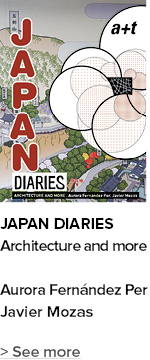




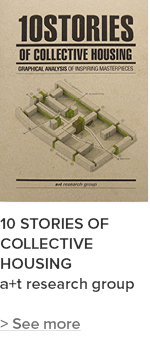

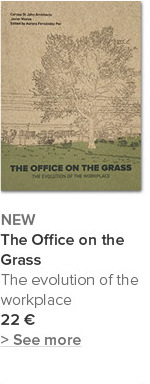
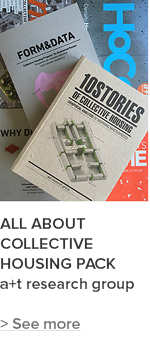
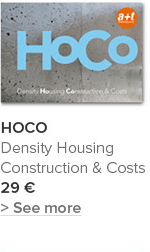

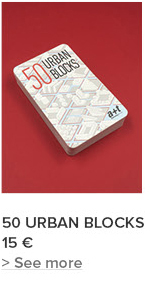
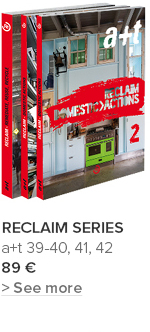

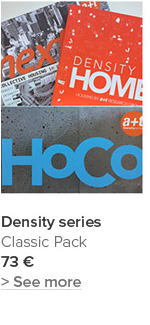






 I've read and agree to
I've read and agree to 


